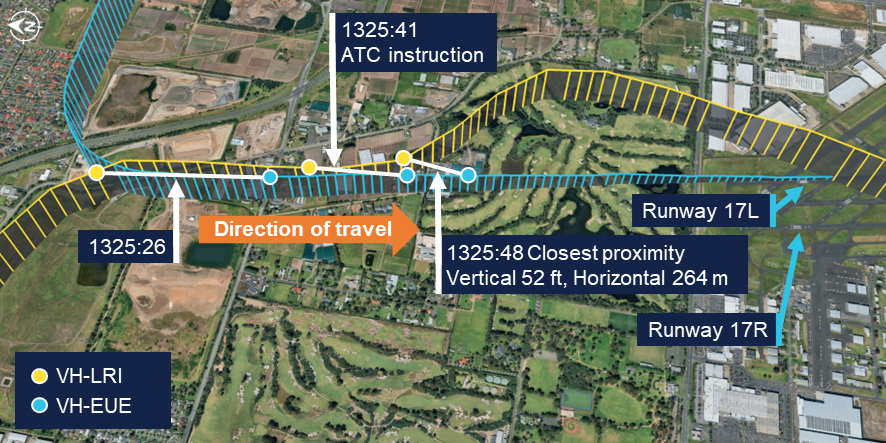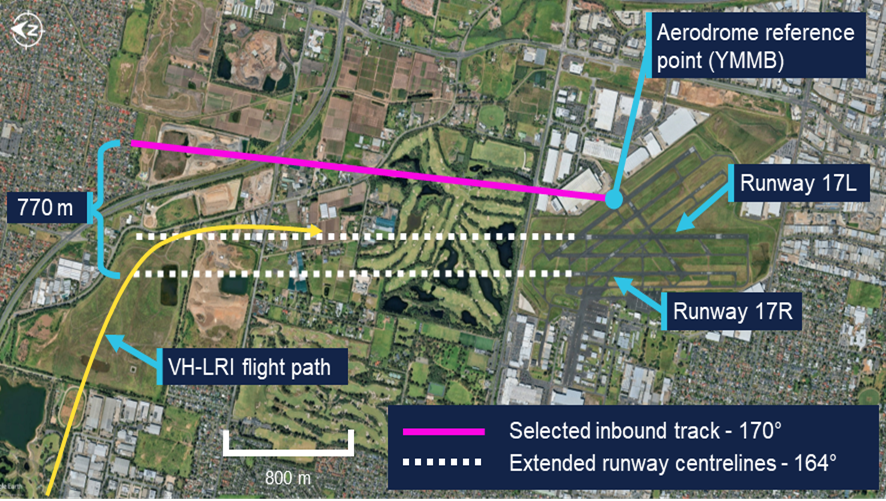
Air traffic control issued instructions to deconflict two aircraft on approach to the same runway at Moorabbin Airport after the pilot of an Aero Commander inadvertently turned onto the wrong final approach path, an ATSB final report details.
On 9 August 2025, the twin-engine Aero Commander was being ferried from Bacchus Marsh to Moorabbin Airport, in Melbourne’s south-east, with a single pilot on board.
The pilot, who was unfamiliar with Moorabbin Airport, intended to land on runway 17R, and configured their electronic flight bag and GPS navigation unit to provide guidance to that runway.
“During pre-flight planning, the pilot did not identify Moorabbin’s aerodrome reference point was not near the runway 17R centreline, nor that runway 17R’s magnetic heading of 164° differs slightly from that implied by its designation,” ATSB Director Transport Safety Stuart Macleod said.
Consequently, the inbound track showed by the pilot’s GPS, based on their inputs, was offset and deviated away from the runway centreline.
Approaching the airport from the west, the pilot turned right, attempting to join final targeting this selected inbound track. The aircraft passed the extended centreline for the intended runway 17R, and instead joined final for the parallel runway 17L.

Concurrently, a flying training operator’s Cessna 172 was conducting circuit training on runway 17L with an instructor and student pilot onboard.
Separation between the two aircraft reduced as they both proceeded on final for runway 17L, before air traffic control (ATC) observed the aircraft in close proximity.
“ATC quickly issued instructions to both pilots, deconflicting the aircraft and directing them away from other traffic,” Mr Macleod said.
Following ATC instructions, the Aero Commander climbed away as the Cessna 172 continued with its landing. The Aero Commander then conducted a visual circuit and landed.
Mr Macleod said the incident was a reminder for pilots of the importance of comprehensive preparation when planning a flight to an unfamiliar airport.
“This is particularly the case when flying into a Metropolitan Class D airport due to their typical high traffic volumes, complex runway layouts, and use of local landmarks and procedures,” he said.
“When arriving during tower hours, advising ATC that you are unfamiliar with the airport alerts them to the fact you may require additional guidance.”
As a result of the incident, the operator of the Aero Commander, 360° Aviation Group, disseminated information to flight crew about the potential for misleading indications when using the aerodrome reference point for navigation at Moorabbin Airport.
Additionally, the training operator, CAE Melbourne Flight Training, is incorporating ADS-B in/out capability into the Cessna 172s in its fleet that were not currently equipped.
Read the final report: Approach to incorrect runway involving Aero Commander 500-U, VH-LRI, Moorabbin Airport, Victoria, on 9 August 2025


